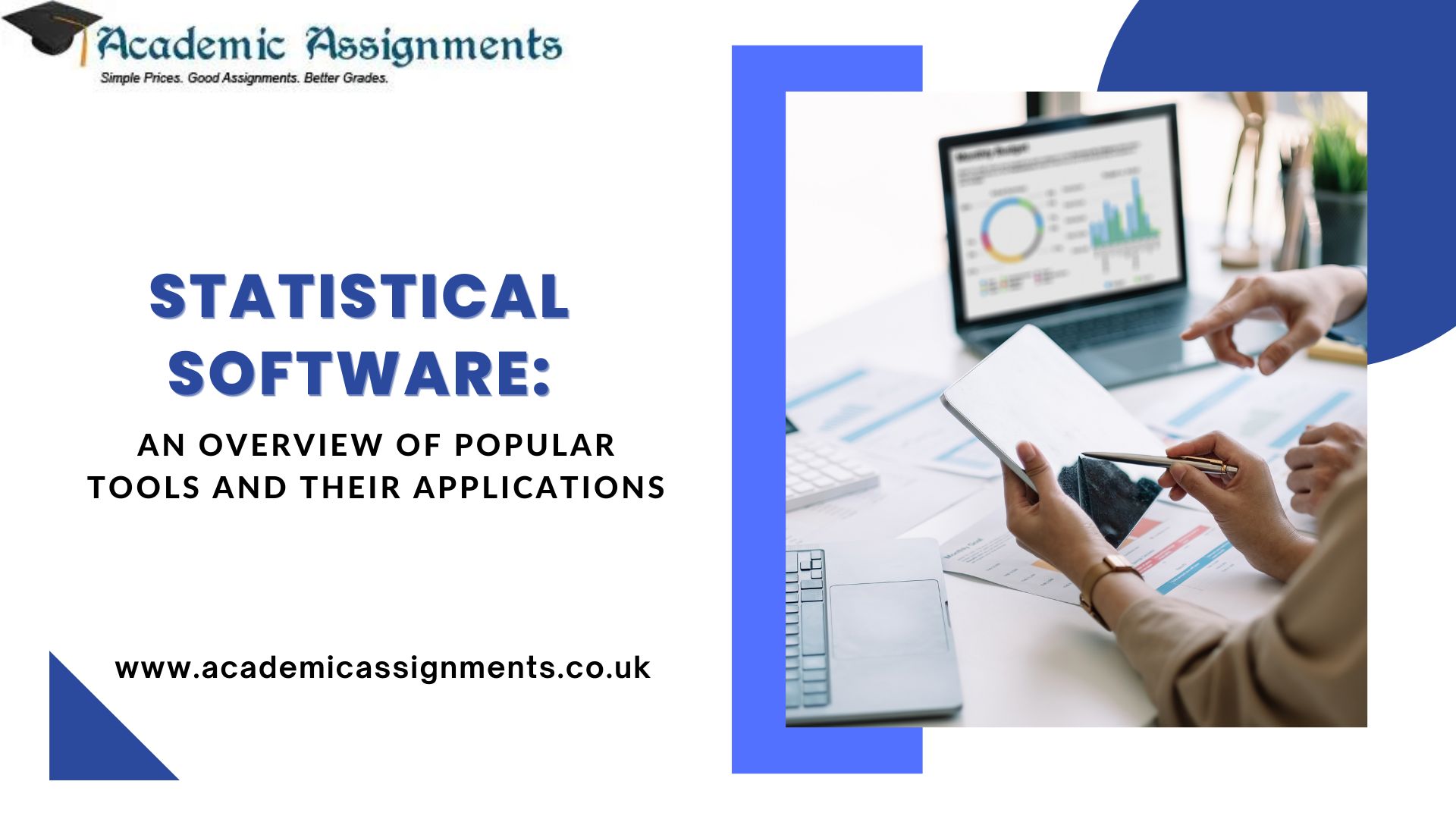Statistical Software: An Overview of Popular Tools and Their Applications
Welcome to the world of numbers and data analysis! Statistical software is critical in taking apart immense data and extracting significant insights. Whether you’re a researcher, data analyst, or business leader, picking the right statistical software can essentially influence your analysis efficiency and accuracy.
In this article, we will profoundly jump into various statistical software, exploring their features and applications and understanding which one could best meet your requirements. From the familiar Microsoft Excel to the versatile R and Python, we’ll cover a range of statistical tools, empowering you to settle on an informed choice while handling data.
Introduction
Statistical software goes about as a virtual laboratory for data analysts and researchers. It gives a stage to manipulate, analyze, and visualize data, aiding decision-making processes. With statistical software, taking care of large datasets and performing complex statistical operations would be reasonable.
- Microsoft Excel
Microsoft Excel, an easily recognized name, is a starting statistical analysis tool. It offers essential statistical capabilities like mean, median, and standard deviation. Be that as it may, Excel may have to get up to speed for complex analysis, making it ideal for more simpler tasks.
- SPSS (Statistical Package for the Social Sciences)
SPSS, intended for social sciences, is an amazing asset for statistical analysis. Its easy to use interface and many implicit elements make it a go-to for psychology, sociology, and other social science researchers.
- R
R, an open-source software, is generally utilized for statistical analysis and graphics. It’s versatility and broad library support makes it a #1 among data scientists and statisticians.
- Python with pandas and NumPy
Python has acquired gigantic fame with particular libraries like pandas and NumPy. It offers robust statistical functionalities and is widely utilized in data science because of its simplicity and efficiency.
- SAS (Statistical Analysis System)
SAS is a comprehensive software suite known for its data management and advanced analytics capabilities. It’s a favored decision in industries where complex data analysis is a normal requirement.
- STATA
STATA is tailored for specialized statistical analyses, especially in economics and social sciences. It provides a range of features for data manipulation and graphical representation.
- MATLAB
Initially used for numerical computing, MATLAB has evolved to include a comprehensive statistical toolbox. It finds applications in engineering and various scientific fields.
- JMP
JMP, known for its interactive and dynamic data visualization, is popular for exploratory data analysis. Its user-friendly interface allows quick insights into data.
- Tableau
Tableau excels in data visualization and offers basic statistical analysis features. Its intuitive and interactive interface makes it accessible even to those with limited technical knowledge.
- Google Sheets
Google Sheets, a cloud-based tool, has various statistical add-ons that enhance its functionalities. It’s known for collaboration and accessibility.
- Comparative Analysis
Let’s now compare these popular statistical software tools, weighing their pros and cons to help you decide which suits your requirements the best.
- Considerations when Choosing Statistical Software
Selecting the right statistical software involves considering various factors, including the complexity of analysis, ease of use, cost, and specific functionalities. Let’s delve into these considerations to guide you in making an informed choice.
- Challenges and Limitations
While statistical software significantly eases data analysis, it’s not without challenges. Let’s explore common issues users face and ways to overcome them.
- Conclusion
In conclusion, statistical software is a strong partner in data analysis. Picking the right one relies upon your needs, expertise, and the complexity of your analytical tasks. Feel free to these choices and find the ideal instrument that aligns with your goals.
FAQs (Frequently Asked Questions)
For beginners, Microsoft Excel or Google Sheets are incredible beginning stages. They offer essential statistical functions and have intuitive interfaces.
R and Python, particularly when utilized with their respective libraries (e.g., pandas, NumPy), are magnificent for advanced statistical displaying because of their extensive capabilities and flexibility.
R, Python, and Google Sheets are free alternatives that provide robust statistical functionalities, pursuing them popular decisions.
Common challenges incorporate a steep learning curve, handling large datasets, and guaranteeing data accuracy all through the analysis process.
While there’s a learning curve, transitioning between software becomes smoother with training on the off chance that you grasp statistical principles. Every software has its special highlights, however the fundamental concepts remain consistent.
Author Bio: Mark Edmonds, an old pro at Academic Assignments, is devoted to upgrading students’ comprehension through first rate statistics assignment help. With skill in statistical software, he enables students to excel in their academic undertakings. Utilizing his capability, he creates exhaustive aides and shrewd articles, similar to this one, revealing insight into statistical tools and applications. Mark’s energy lies in improving on complex ideas, making statistics available and connecting with for students taking a stab at academic excellence.

 Blogs
Blogs





